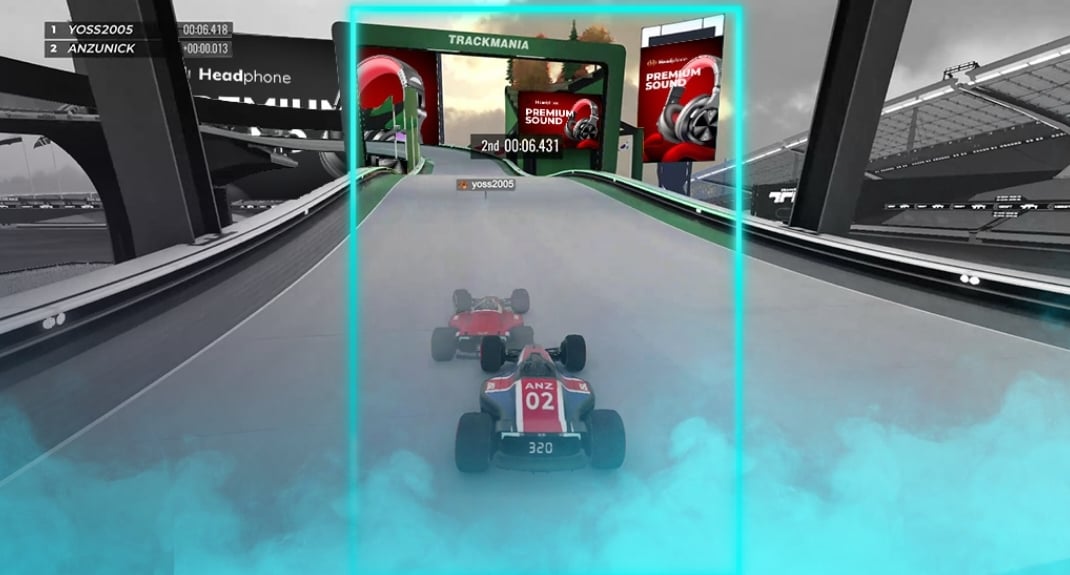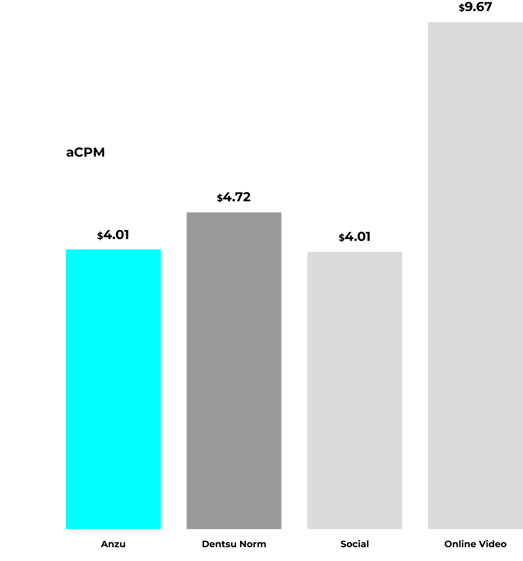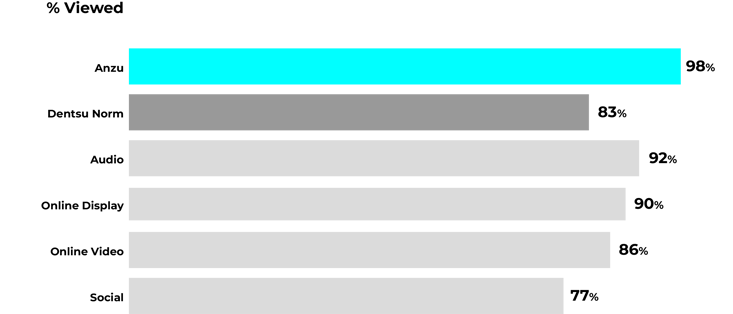- Newsroom
- >
- Dentsu's New Study Unveils the Power of Intrinsic In-Game Ads in Capturing Attention

Dentsu's New Study Unveils the Power of Intrinsic In-Game Ads in Capturing Attention
With over 3.3 billion people playing games globally and with the video games market projected to be worth $320 billion by 2026, advertisers everywhere are increasingly looking to gaming to help them make meaningful connections with hard-to-reach audiences.
To help advertisers understand just how effective gaming can be at doing this, dentsu and Lumen have launched a new attention study in collaboration with Anzu, Twitch, and Activision Blizzard into the power of gaming, exploring several entry points to better understand how they can be used to augment media plans.
Carrying out the research
For the study, dentsu recruited 200 regular gamers aged 18 or over to take part in a 60-minute in-person lab study with Television City in Las Vegas. Their facility in the MGM Grand served as a great melting pot to capture a diverse sample of respondents. In addition, 250 online respondents were recruited as a control cell to compare results with the actual gamers. Test respondents played a range of real, live games for 30 minutes.
During the study, Lumen used proprietary eye-tracking technology to measure the players’ gaze during gameplay and then analyzed the results using their attention measurement software. All respondents (including the control case) then answered a series of questions to understand the ads' performance around a number of areas, including brand recall and brand choice.
The study revealed positive findings about how intrinsic in-game advertising can be a suitable entry point for brands looking to reach gaming audiences. Here are our top four takeaways.
1. In-game ads evoke twice as much attention as online display ads
The data from the in-person test revealed that Anzu’s intrinsic in-game ads evoked double the amount of attention compared to traditional online display ads at 3,422 seconds vs. 1,416 seconds. This confirms and builds upon previous research we carried out with Lumen, which also showed huge attention levels associated with in-game advertising due to the lean in nature of the platform and little to no second screening.
2. Average in-game CPM is less than half of traditional online video
Dentsu calculated an aCPM (attention cost per 1,000 impressions) (CPM / APM X 1000), where Anzu's average of $4.01 outperformed the dentsu norm of $4.72 and was shown to be less than half of online video ($9.67), and similar to social ($4.01).

This helps to debunk the myth that it costs a lot for brands to get into gaming and get in front of their audiences. With intrinsic in-game ads, you can be set up in no time, running your ads in placements that catch your audiences’ attention while complementing play and taking nothing away from the UX.
3. Intrinsic in-game ads get seen by players
In addition to the traditional viewability numbers that we performed well on, we led the way on actual eyes on ads during the live play test with a viewability score of 98% compared to dentsu’s norm of 83%, beating out audio (92%), social media (77%), online video (86%), and online display (90%). Anzu’s ads were also shown to have an average visibility on-screen score of 99%, well beyond the standard 87% benchmark.
The great thing about intrinsic in-game ads is that you can guarantee that your ads will be seen by the majority of players, yet they do not interfere with or disrupt the experience. This is an area that is only going to become more important as, while intrusive ads are annoying in general, they are especially annoying in games and during gameplay.
4. In-game ads are great for driving top, middle, and bottom of the funnel campaigns
Statistical testing shows that there was a significant correlation between average viewed time and prompted brand recall (R²= 94%). One of the displayed ad creatives, which was from a global travel brand, was particularly successful, with a 7% lift in brand choice among players of Trackmania (a racing game from Ubisoft, which was one of the PC games used in the test). In addition, the study showed statistically significant lifts in purchase intent when combined with strong creatives, with an 18% lift in purchase consideration among the exposed group.

These findings further demonstrate the versatility of in-game ads, debunking the myth that they are only good at driving top-of-the-funnel activities. By carrying out brand lift studies, advertisers are able to see the impact in-game can have on areas like brand recall, favorability, and purchase intent.
Top takeaways
In summary, the results show that with intrinsic in-game ads, there is no need to compromise by choosing between the UX and ad engagement/effectiveness, as they offer advertisers a way to make meaningful connections with players while respecting their gameplay.
Additionally, from the results we see across the brand lift studies, for optimal in-game media effectiveness, advertisers need to follow the guidelines for different gaming genres, be strategic with the ad formats, and use clear branding, highlighting the importance of using the right creatives in gaming. Access the study in full here.

Kyle works as Anzu’s Senior Insights and Research Manager. With experience spanning the media and technology industry, he is dedicated to uncovering what makes in-game advertising unique.